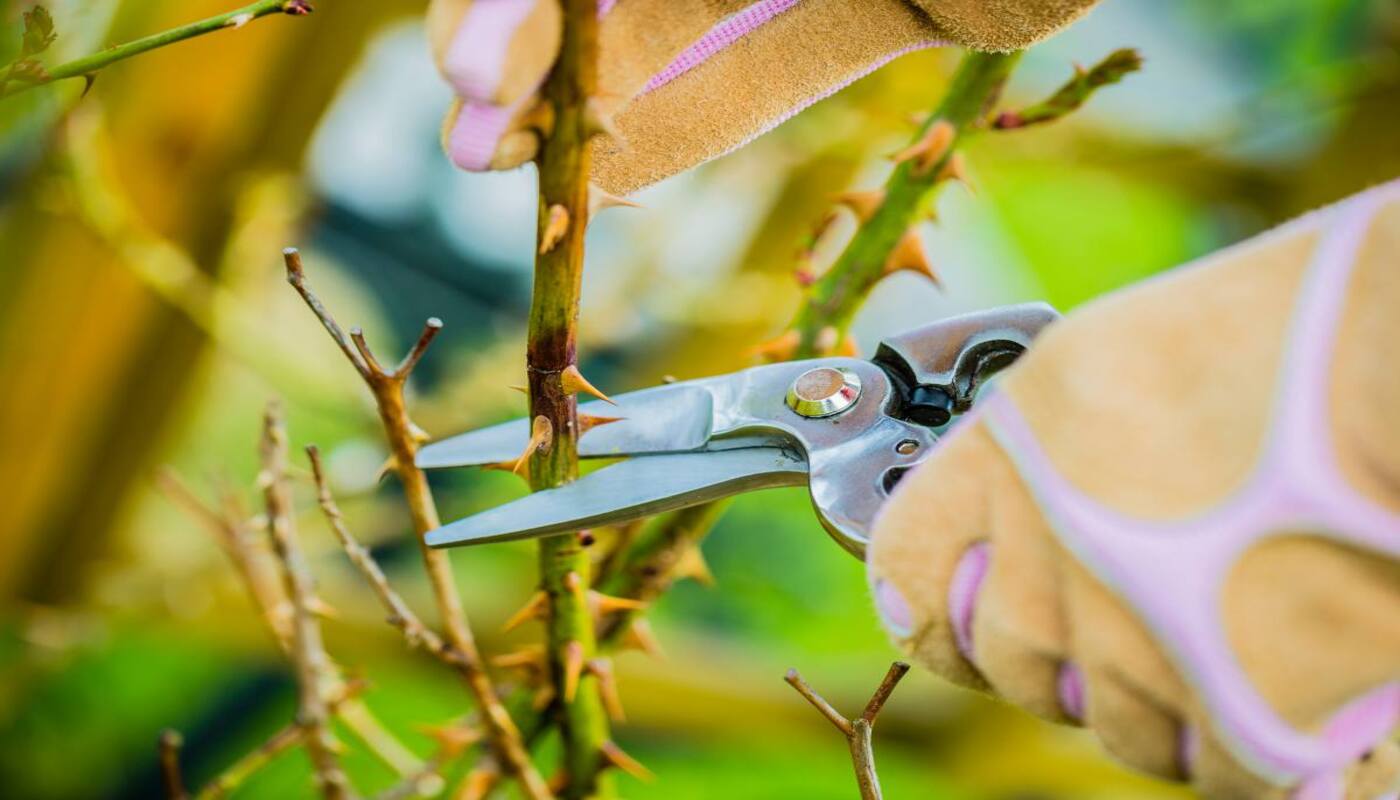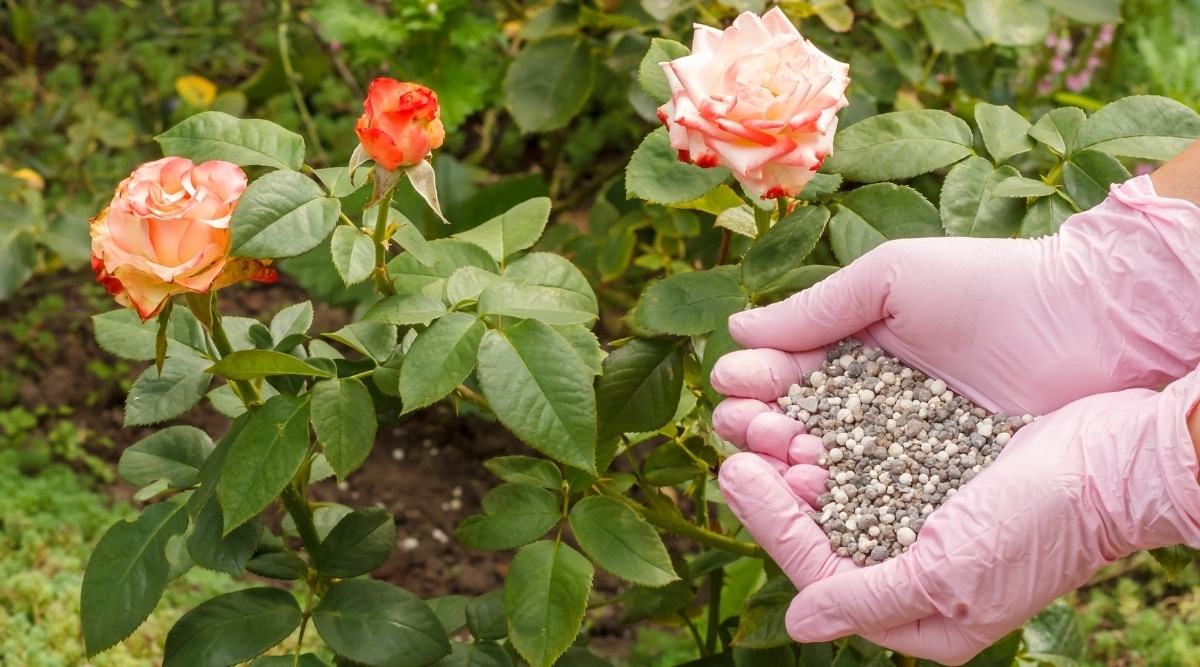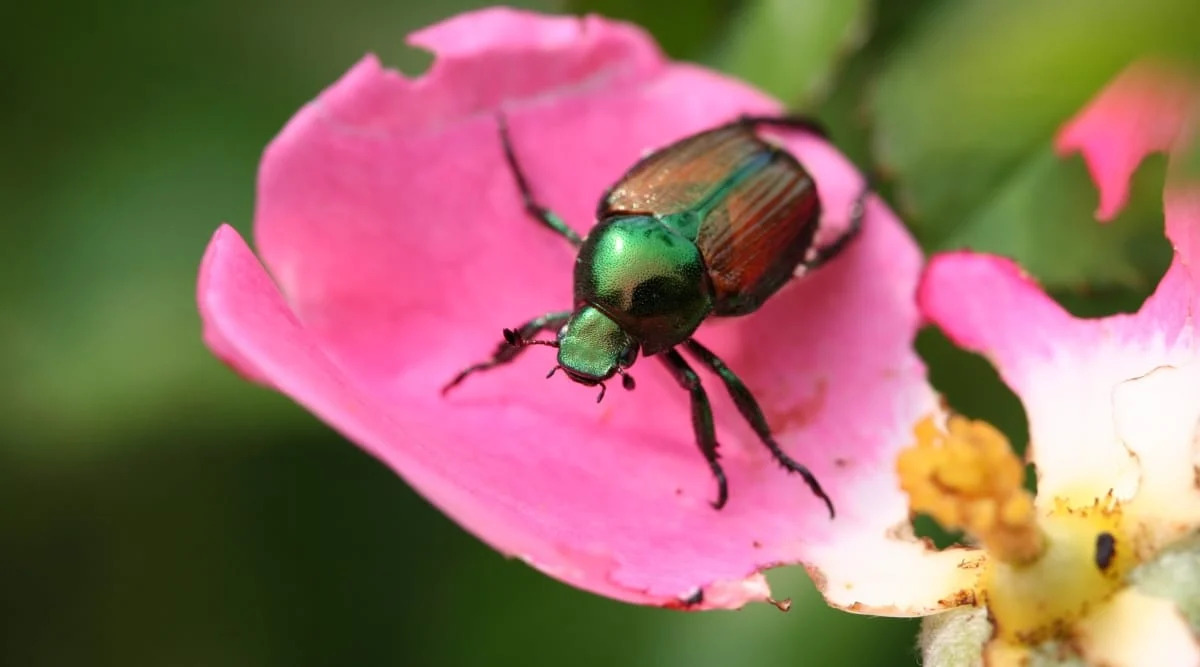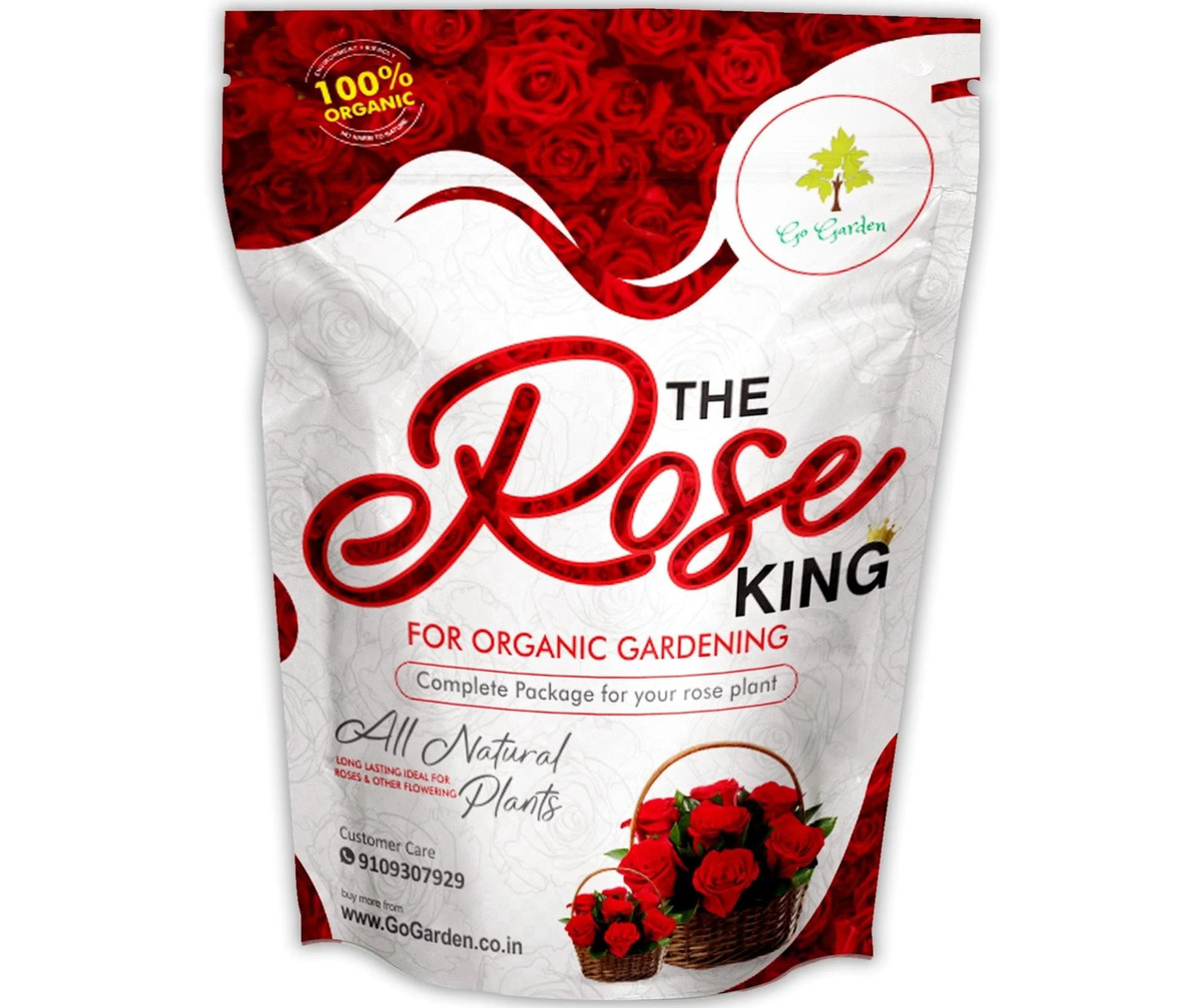Home>Types of Gardening>Ornamental Gardening>How To Collect Sumeru Rose Seeds


Ornamental Gardening
How To Collect Sumeru Rose Seeds
Published: September 14, 2023
Learn how to collect Sumeru Rose seeds for your ornamental gardening needs. Discover step-by-step instructions and expert tips.
(Many of the links in this article redirect to a specific reviewed product. Your purchase of these products through affiliate links helps to generate commission for Chicagolandgardening.com, at no extra cost. Learn more)
Table of Contents
Introduction
Welcome to the wonderful world of ornamental gardening! If you have a passion for plants and a desire to create a visually stunning garden, then you have come to the right place. One of the most enchanting additions to any garden is the Sumeru Rose, a delicate and beautiful flower that brings elegance and charm to any outdoor space.
In this article, we will guide you through the process of collecting Sumeru Rose seeds, allowing you to propagate these exquisite flowers and enjoy their beauty year after year. Whether you are a seasoned gardener looking to expand your collection or a beginner with a green thumb, this comprehensive guide will provide you with the knowledge and techniques to successfully collect and grow Sumeru Rose seeds.
Before we delve into the specifics of collecting Sumeru Rose seeds, let’s take a moment to understand these marvelous flowers. The Sumeru Rose, scientifically known as Rosa Sumerensis, is a unique species of rose that originates from the exotic and enchanting region of Sumeru. It is renowned for its vibrant colors, captivating fragrance, and intricate petal formations. The Sumeru Rose is treasured by gardeners and flower enthusiasts worldwide for its exceptional beauty and its ability to transform any garden into a paradise.
Now that we have an appreciation for the Sumeru Rose, let’s explore the process of finding the ideal growing conditions for these remarkable flowers. Creating the perfect environment will ensure the success of our seed collection and ultimately lead to the flourishing of our Sumeru Rose seedlings.
Understanding Sumeru Rose Seeds
Before we venture into collecting Sumeru Rose seeds, it’s essential to have a solid understanding of the seeds themselves. Sumeru Rose seeds are small, oval-shaped structures that contain the genetic material required for the growth and development of a new Sumeru Rose plant.
Each seed is enclosed within a protective outer casing called the seed coat. This coat serves as a barrier, safeguarding the embryo from external factors such as temperature fluctuations and moisture loss. The seed coat also plays a crucial role in promoting seed dormancy, ensuring that the seed remains in a state of rest until the ideal conditions for germination are met.
When it comes to the appearance of Sumeru Rose seeds, they vary in color, ranging from light brown to dark brown. The texture of the seed coat also varies, with some seeds having a smooth surface while others may have a slightly rough or wrinkled texture.
It’s important to note that Sumeru Rose seeds may have a natural period of dormancy or a built-in mechanism to delay germination. This dormancy is nature’s way of ensuring that the seeds germinate when conditions are optimal for the survival and growth of the new seedlings. This period of dormancy can vary from a few weeks to several months or even longer.
Understanding the dormancy period of Sumeru Rose seeds is crucial because it helps us plan and time our seed collection activities appropriately. By collecting seeds during their most viable period, we increase the chances of successful germination and healthy seedlings.
Sumeru Rose seeds can be collected from mature, fully developed flowers. These flowers should ideally be nearing the end of their blooming stage, with the petals starting to fade and the seed pods forming. The seed pods are small, spherical structures that develop where the flower petals were once attached.
Now that we have a good understanding of Sumeru Rose seeds, let’s discover the ideal growing conditions that will promote successful seedling development in the next section.
Finding the Perfect Growing Conditions
In order for our Sumeru Rose seeds to thrive and develop into healthy seedlings, it is vital to provide them with the perfect growing conditions. By creating an environment that mimics their natural habitat, we can ensure optimal growth and the best chances of success.
First and foremost, Sumeru Rose seeds require a well-drained soil that is rich in organic matter. This allows for proper root development and helps prevent waterlogging, which can lead to root rot. Prepare the soil by incorporating compost or well-rotted manure to improve its overall fertility and drainage.
Next, Sumeru Rose seeds thrive in a location that receives ample sunlight. Ideally, choose a spot in your garden that receives at least 6 to 8 hours of direct sunlight daily. This will ensure that the seedlings receive enough energy to grow and produce vibrant flowers.
Temperature plays a crucial role in the germination and growth of Sumeru Rose seeds. These seeds prefer a moderate climate with temperatures ranging from 60°F to 75°F (15°C to 24°C). If you live in a region with extreme temperatures, consider starting the seeds indoors and gradually acclimatizing the seedlings to outdoor conditions.
Proper watering is essential for the successful development of Sumeru Rose seedlings. During the germination stage, it is important to keep the soil evenly moist but not waterlogged. Once the seedlings emerge, gradually reduce the frequency of watering, allowing the soil to dry slightly between waterings. This helps promote the growth of a robust root system.
In addition to these key factors, it’s important to consider the prevailing environmental conditions in your area, such as humidity and wind exposure. Sumeru Rose seeds prefer moderate humidity levels, and if you live in a particularly dry climate, you may need to increase humidity around the seedlings by misting them regularly.
With these factors in mind, take some time to assess your garden and identify the location that best meets the requirements of the Sumeru Rose seeds. Remember, the better the growing conditions, the more likely the seeds will germinate and flourish into stunning rose bushes.
Now that we have covered the ideal growing conditions, let’s move on to the exciting process of collecting Sumeru Rose seeds from mature flowers.
Collecting Sumeru Rose Seeds
Collecting Sumeru Rose seeds is an exhilarating process that allows us to preserve and propagate these captivating flowers. To collect the seeds, we will need to identify the right stage of the flower’s lifecycle and handle the seeds with care.
The ideal time to collect Sumeru Rose seeds is when the flower has completed its blooming stage and the petals have started to fade and fall off. At this stage, the seed pods, also known as hips, will begin to form. These hips are small, round structures located at the base of where the petals were once attached.
Once the hips have fully formed and turned a deep red or orange color, it’s time to harvest the Sumeru Rose seeds. Gently pluck the hips from the plant, being careful not to damage the seed pods. Place the harvested hips in a clean container, making sure to label them accordingly to maintain organization and avoid confusion.
Once you have collected an ample amount of hips, it’s time to extract the seeds from the pods. Start by gently cutting open each hip using a sharp pair of scissors or a knife. Inside the hip, you will find numerous small seeds nestled within a fleshy pulp.
To separate the seeds from the pulp, gently scrape the contents against a fine mesh sieve or a piece of cheesecloth. This will help remove the flesh while allowing the seeds to pass through. Rinse the seeds with lukewarm water to ensure they are clean and free from any remaining pulp.
After rinsing, spread the seeds out on a clean paper towel or a screen and allow them to air-dry. Make sure to choose a well-ventilated area with low humidity to facilitate the drying process. Avoid exposing the seeds to direct sunlight or excessive heat, as this can damage their viability.
Once the seeds are completely dry, transfer them to a clean, airtight container. Label the container with the seed variety and the date of collection. Store the container in a cool, dark, and dry place to preserve the seeds’ quality and viability.
By following these steps, you can successfully collect and preserve Sumeru Rose seeds for future planting. Now that we have collected the seeds, let’s move on to the next section, where we will discuss the preparation of the seeds for planting.
Preparing the Seeds for Planting
Before we can plant the Sumeru Rose seeds, it’s important to properly prepare them to maximize their chances of successful germination and growth. Preparing the seeds involves a few essential steps to break their natural dormancy, ensuring that they are ready for planting.
First, a common method to break seed dormancy is through a process called stratification. Stratification mimics the natural winter conditions that seeds experience in their native environment. To stratify the Sumeru Rose seeds, start by moistening a paper towel or a clean cloth. Place the seeds on one half of the towel, then fold it over to cover the seeds. Place the towel with the seeds in a plastic bag and seal it. This creates a semi-humid, controlled environment.
Next, refrigerate the bag with the seeds for a period of 4 to 6 weeks. The cold temperature will initiate the stratification process, breaking the seed’s dormancy. Check periodically to ensure that the towel remains moist. After the stratification period, remove the seeds from the refrigerator and allow them to gradually return to room temperature.
Once the seeds have gone through stratification, it’s time to perform a germination test. This will check the viability of the seeds and determine how successful the germination process will be. Take a few seeds and place them on a damp paper towel or in a seed tray filled with a well-draining seed starting mix. Keep the seeds in a warm, bright location and maintain consistent moisture levels.
Observe the seeds over a period of 7 to 14 days. If a majority of the seeds show signs of germination, such as the sprouting of tiny roots or shoots, it indicates that the seeds are viable and ready for planting. If few or none of the seeds germinate, it may be necessary to repeat the stratification process or consider sourcing fresh seeds.
Now that you have assessed the viability of the seeds, it’s time to prepare for planting. Fill small pots or a seed tray with a well-draining potting mix specifically designed for seedlings. Make small depressions in the soil and place one seed in each depression, covering them lightly with soil.
Water the soil gently, ensuring it remains evenly moist but not waterlogged. Place the pots or seed tray in a warm, bright location with indirect sunlight. Maintain consistent moisture levels and monitor the development of the seedlings.
With these steps, you have successfully prepared the Sumeru Rose seeds for planting. In the next section, we will delve into the process of planting and caring for the Sumeru Rose seedlings.
Planting and Caring for Sumeru Rose Seedlings
Now that we have prepared the Sumeru Rose seeds for planting, it’s time to move on to the exciting process of planting and caring for the seedlings. By providing the right conditions and proper care, we can ensure the healthy growth and development of our Sumeru Rose plants.
Start by selecting a location in your garden that receives full sun or partial shade. Prepare the soil by enriching it with organic matter, such as compost or well-rotted manure, to improve its fertility and drainage.
Carefully remove the Sumeru Rose seedlings from their pots or seed tray, being mindful not to damage their delicate roots. Dig a hole in the prepared soil that is slightly larger than the root ball of the seedling. Place the seedling in the hole, ensuring that the top of the root ball is level with or slightly above the surrounding soil.
Gently backfill the hole with soil, firming it around the base of the seedling to provide stability. Water the newly planted seedling thoroughly to settle the soil and encourage root establishment.
As your Sumeru Rose seedlings grow, it is crucial to provide consistent moisture. Water deeply and regularly, ensuring that the soil remains evenly moist but not waterlogged. Avoid overhead watering or getting the leaves wet, as this can lead to fungal diseases.
Applying a layer of organic mulch around the base of the seedlings can help retain moisture, suppress weeds, and regulate soil temperature. Organic mulches, such as straw or wood chips, also break down over time, enriching the soil with nutrients.
Fertilization is another important aspect of caring for Sumeru Rose seedlings. Apply a balanced organic fertilizer formulated for roses according to the manufacturer’s instructions. This will provide the necessary nutrients for healthy growth and blooming.
Regular pruning is essential to shape and promote bushier growth in your Sumeru Rose plants. Prune during the dormant season, removing any dead, damaged, or diseased branches. You can also shape the plant by selectively pruning to encourage more lateral branching and a compact form.
Keep an eye out for common pests and diseases that may affect Sumeru Rose plants. Aphids, thrips, and spider mites are some of the common pests to watch for. Treat any infestations promptly using organic pest control methods or consult with a local gardening expert for advice.
Throughout the growing season, monitor the growth and health of your Sumeru Rose seedlings. Look for signs of vigor, such as robust foliage and abundant flower buds. Address any issues promptly, such as nutrient deficiencies or signs of stress, to ensure the optimal growth and bloom of your Sumeru Rose plants.
Congratulations! You have successfully planted your Sumeru Rose seedlings and provided them with the care they need to thrive. In the next section, we will explore some common seedling issues and how to troubleshoot them.
Troubleshooting Common Seedling Issues
While caring for your Sumeru Rose seedlings, you may encounter some common issues that can affect their growth and overall health. Identifying and addressing these issues promptly will help ensure the success of your seedlings. Let’s take a look at some common seedling issues and how to troubleshoot them.
1. Poor Germination: If your Sumeru Rose seeds have failed to germinate or only a few have sprouted, it may indicate issues with seed viability or improper planting conditions. To address this, consider testing the viability of your seeds using a germination test before planting. Ensure that the planting conditions, such as soil moisture and temperature, are optimal for seed germination.
2. Damping Off: Damping off is a fungal disease that can cause seedlings to wilt, collapse, and ultimately die. It is often caused by overwatering or poorly draining soil. To prevent damping off, ensure proper drainage by using well-draining soil mix and watering your seedlings from the bottom. Sterilize your containers before planting and provide good air circulation.
3. Nutrient Deficiencies: Yellowing leaves, stunted growth, and poor overall vigor could indicate nutrient deficiencies in your Sumeru Rose seedlings. Test the soil to determine any nutrient imbalances and adjust your fertilization regimen accordingly. Organic fertilizers formulated for roses can help provide the necessary nutrients for healthy growth.
4. Pest Infestation: Aphids, thrips, and spider mites are common pests that can attack Sumeru Rose seedlings. Monitor your plants regularly and look for signs of pest infestation, such as distorted leaves, webs, or insect activity. Use organic pest control methods, such as insecticidal soap or neem oil, to manage and control the pests.
5. Environmental Stress: Extreme temperatures, excessive sunlight, or inadequate humidity can cause stress to your Sumeru Rose seedlings. Ensure that the plants are situated in an optimal location with adequate shade and protection from harsh weather conditions. Mist the leaves regularly to increase humidity if you live in a dry climate.
By being attentive to these common seedling issues and taking appropriate action, you can promote the healthy growth and development of your Sumeru Rose seedlings. With proper care and troubleshooting, your seedlings will be on their way to becoming stunning rose bushes in your garden.
Now that we have covered troubleshooting common seedling issues, let’s move on to the final section, where we will explore the process of harvesting and storing Sumeru Rose seeds for future propagation.
Harvesting and Storing Sumeru Rose Seeds
Harvesting and storing Sumeru Rose seeds is essential to preserve their genetic material and ensure a continuous supply of these exquisite flowers. By following proper techniques, we can maintain the viability of the seeds for future propagation. Let’s explore the process of harvesting and storing Sumeru Rose seeds.
1. Timing: Choose the right time to harvest the seeds. Wait for the hips to fully mature and turn a deep red or orange color. This indicates that the seeds are ripe and ready for harvesting. Harvesting too early may result in seeds that are not fully developed and may have a lower germination rate.
2. Removal of Hips: Gently pluck the hips from the plant, taking care not to damage the seed pods. Some gardeners prefer to wear gloves during this process to protect their hands from thorns. Place the harvested hips in a clean container, ensuring that it is labeled with the seed variety and date of collection.
3. Extraction of Seeds: To extract the seeds from the hips, begin by cutting open each hip using sharp scissors or a knife. Inside the hip, you will find numerous small seeds embedded in a fleshy pulp. Carefully scrape the seeds from the pulp, using a fine mesh sieve or a piece of cheesecloth. Rinse the seeds with lukewarm water to remove any remaining pulp.
4. Drying the Seeds: After rinsing, spread the seeds out on a clean paper towel or a screen. Allow them to air-dry completely in a well-ventilated area away from direct sunlight. Once dry, the seeds should feel firm and not soft or mushy.
5. Storing the Seeds: Transfer the dried seeds to a clean, airtight container. Label the container with the seed variety and the date of collection. It’s crucial to store the seeds in a cool, dark, and dry location to maintain their viability. A refrigerator or a cool, dry basement are suitable storage areas.
6. Long-Term Storage: If you wish to store the seeds for a longer period, consider using moisture-proof bags or containers with desiccants to absorb any excess moisture. This will help extend the shelf life of the seeds.
Remember to periodically check stored seeds for signs of mold or pests, discarding any that show signs of damage or deterioration. If properly stored, Sumeru Rose seeds can remain viable for several years.
By following these steps, you can successfully harvest and store Sumeru Rose seeds for future use. This ensures a continuous supply of these magnificent flowers and allows you to expand your Sumeru Rose garden or share seeds with fellow gardening enthusiasts.
Now that we have covered the process of harvesting and storing Sumeru Rose seeds, let’s conclude our guide on this intriguing and rewarding journey of ornamental gardening with Sumeru Roses.
Conclusion
Embarking on the journey of collecting and growing Sumeru Rose seeds can be a delightful and rewarding experience. These exquisite flowers bring elegance, beauty, and charm to any garden, and being able to propagate them allows us to preserve their unique qualities for generations to come.
Throughout this comprehensive guide, we have explored the various aspects of collecting and caring for Sumeru Rose seeds. We learned about the characteristics of Sumeru Rose seeds, identified the perfect growing conditions, and discovered the techniques for collecting and preparing the seeds for planting.
We also delved into the process of planting and caring for Sumeru Rose seedlings, troubleshooting common issues that may arise, and finally, harvesting and storing the seeds for future propagation.
By following these steps and tips, you can immerse yourself in the enchanting world of ornamental gardening, transforming your outdoor space into a haven of Sumeru Roses. The vibrancy of their colors, the alluring fragrance, and the intricate formations of their petals will undoubtedly captivate the senses and provide endless joy.
Remember, gardening is an art that requires patience, dedication, and a deep appreciation for nature’s wonders. As you embark on your Sumeru Rose journey, take the time to observe and nurture your plants, allowing them to flourish and bring beauty to your surroundings.
So, grab your gardening tools, prepare your soil, and let your passion for ornamental gardening bloom alongside the magnificent Sumeru Roses. Happy gardening!




